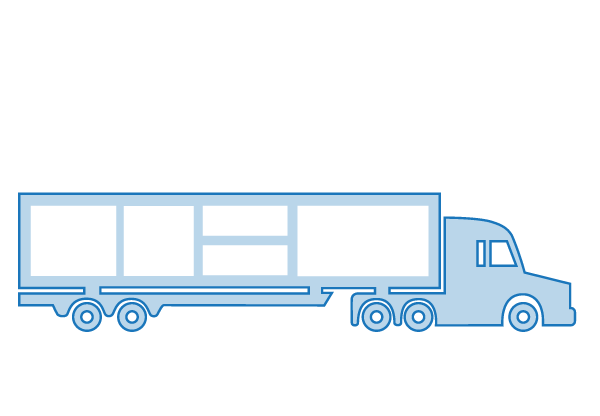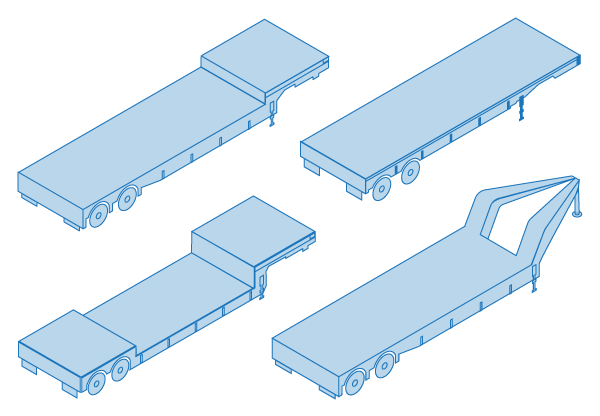Whether you’re a newbie or a seasoned veteran in the shipping industry, you won’t want to miss this definitive guide on full truckload (FTL) shipping.
Below, you’ll find detailed coverage on getting the best pricing when shipping FTL, choosing the right carrier, trailer types, permits required, and more…
What is FTL Freight Shipping
Full Truckload or FTL shipping has its own rules and norms. As opposed to LTL shipping, you would not be sharing a truck with other shippers but you would be renting one all to yourself.
Generally, full truckload shipping is used for either large amounts of freight or for white glove shipments that require special handling and extra care.
How to Choose the Right Carrier For Your FTL Shipping Needs
FTL shipping is by its nature more reliable than LTL shipping. The fact that your freight has a truck of its own is a big step up in terms of reliability.
The main factors you want to consider when choosing a carrier for your shipment are pricing and whether they can accommodate all of the needs you have for any specific shipment.
These services may vary from any special handling to specific types of trucks that might be required.
Oversized Cargo Shipping
The main thing you need to know is that not all carriers will ship oversized cargo. Carriers that do handle these types of shipments will be aware of the rules and regulations set up by the Department of Transportation (DOT) as well as the paperwork and time restrictions that apply.
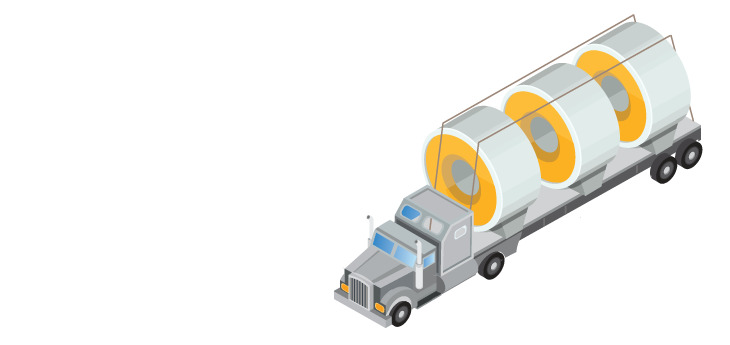
Permits and Regulations
Timing is crucial when it comes to shipping documentation, and permits for oversized cargo are no exception.
Some provinces/states can take up to several days to issue the necessary permits so it’s best to think as far ahead as possible, especially if your cargo is time-sensitive.
If you’re looking to ship cross-border, your shipment must be physically cleaned. Some carriers will offer to clean the cargo for you as part of their (paid) service. In addition to this, Canada-bound shipments require 72 hours to clear customs.
For Canada-bound shipments, all of the necessary paperwork must be sent to the customs broker at least 72 hours prior to crossing the border for exactly this reason.
This does not apply to US-bound shipments.
Lastly, for the shipment to be transported legally with the permits for oversized shipments, the cargo must be indivisible.
Trailer Types
Dry Van
This is one of the most common types of trailers used in shipping freight. They are enclosed trailers that can only be loaded or unloaded from the back.
They offer excellent protection from the elements, but they are limited in the size of cargo that they can accommodate due to being inaccessible for forklifts from the sides.
The standard dry van truck is 53′ long, although they do come in smaller sizes ranging from 10′ to 26′: these are known as straight trucks.
Flat Deck/Flatbed
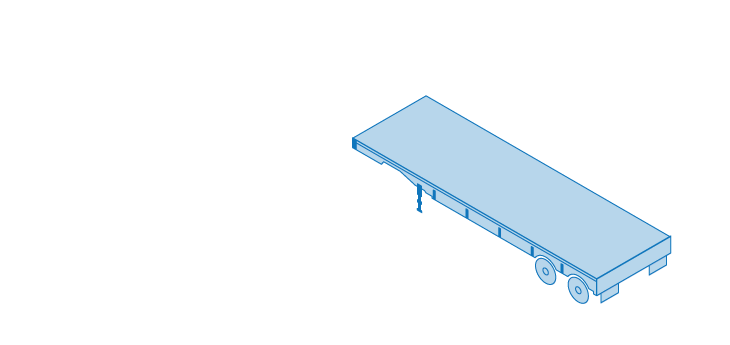
A standard flat deck is one of the two most common types of trucks used in freight shipping.
They are either 53’ or 48’ long and have an open-ended trailer.
They have an advantage compared to standard dry van trailers in that they can more easily be unloaded via forklift (from the side). Generally, the height limit of the freight they can accommodate is 8’6”.
Their con compared to dry vans is that they are open and your shipment is directly exposed to the elements. With that said, the cargo can be tarped and protected that way.
StepDeck / Drop Deck / Single Drop
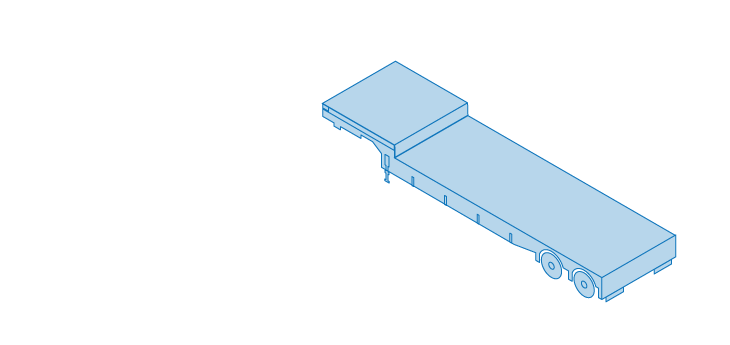
This type of trailer consists of two levels, one higher and one lower. The lower level of the trailer is only 3’ and 3” from the ground as opposed to the standard 4’ 8“. This makes them ideal for shipping cargo that is taller or contains taller portions.
Difference of Deck Types Based on Axles
Tandem (Semi as it’s known in the US)
A tandem truck is a truck that contains two axles. It can transport 40 – 44 thousand lbs as a dry van or 46 – 47 thousand lbs as a flatbed.
Tri-axle
A tri-axle truck has three axles and can take 62 – 65 thousand lbs of weight.
Maxi / Quads
Quads are trucks with four axles that can take 62 – 65 thousand lbs of weight. An additional axle can be useful for better weight distribution compared to a tri-axle truck.
Super B
Due to the enormous weight that this type of truck can handle (90 – 92 thousand lbs), it is illegal outside of Canada, Michigan, and Montana.
The length of these trucks is also not negligible so the length of these trucks is forbidden outside of Washington, Oregon, Utah, and Idaho (carrying maximum weight).
Other types of Decks
Roll Tite / Conestoga
These are flatbed trailers with accordion-type tarp systems which allow for the tarping to be moved as needed.
This gives them an advantage over standard flatbeds in that they can better protect cargo from elements while at the same time being easily unloadable by forklift once the tarp is rolled back.
The cons of these trucks are that cargo fits a little less snugly in the truck due to the tarping needing room to move back and forth and the fact that they cannot accommodate the same amount of weight as a standard flatbed.
China Top
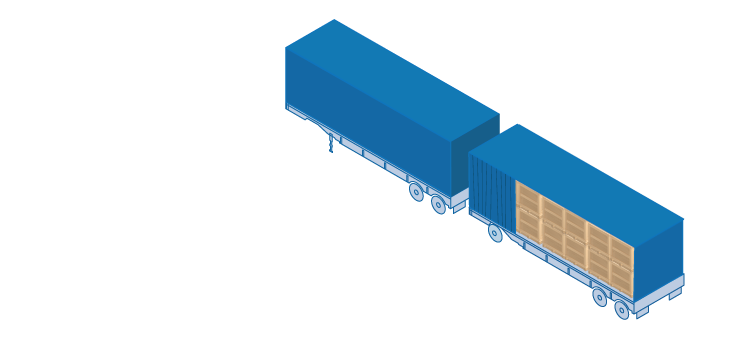
The top of this trailer is solid, while the sides have tarping material that can be used to protect the shipment from the sides. The tarp is safely fastened to the frame of the trailer allowing it to also serve as a wall.
This type of trailer has a con in that it cannot be used for hauling taller cargo.
Double Drop
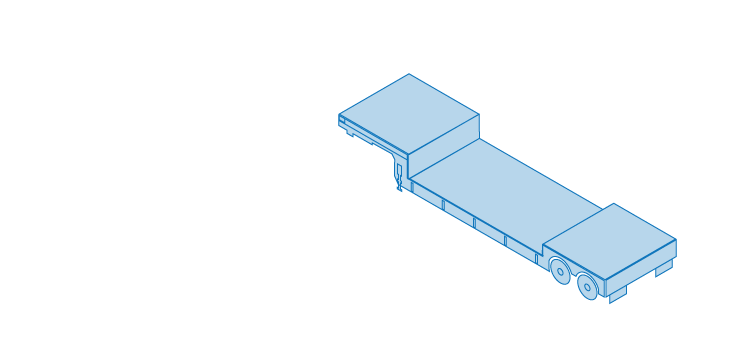
Similar to the StepDeck mentioned above. However, a double drop’s lower level is even closer to the ground, allowing the transportation of even taller cargo. A double drop can transport freight as tall as 11’6”.
Removable Gooseneck (RGN)
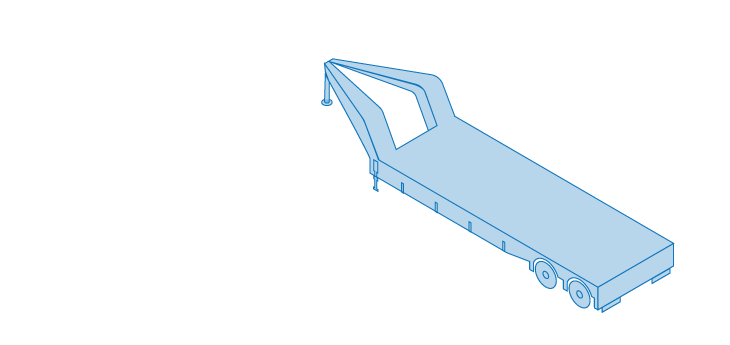
A gooseneck trailer is a detachable type of trailer that, when detached, lowers to ground level and can serve as a ramp.
This clever design allows for cargo to be loaded onto the trailer on wheels such as by forklift or a machine itself can be driven onto it.
Winch Truck
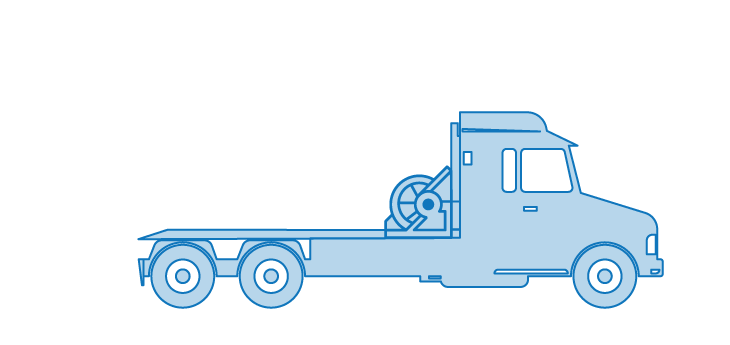
A specialized truck that has a winch (a hauling or lifting device consisting of a rope/chain and a rotating drum) which is used to bring heavy cargo such as heavy equipment or containers onto the trailer.
Crane Truck (Hiab Truck)
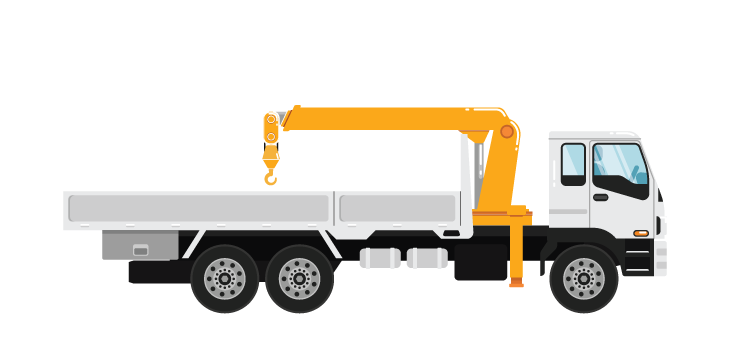
Specialized trucks with cranes built into them. Cranes are used for loading and unloading heavy or oversized cargo that cannot fit onto a forklift.
However, instead of having to rent a crane separately, with a Crane Truck, you would be getting 2 in 1. This type of truck is best suited for local shipments (within one city) rather than long-haul.
Team Shipments
Shipments that cannot be flown but are time-sensitive can often require a team of drivers to get to their destination on time.
Driver teams consist of two drivers that will drive around the clock, each taking a shift of 8 hours before the truck has to stop for a 30-minute break before it gets going again.
Since team-driver shipments are usually time-sensitive, it is best to quote on time and check the ETA immediately.

